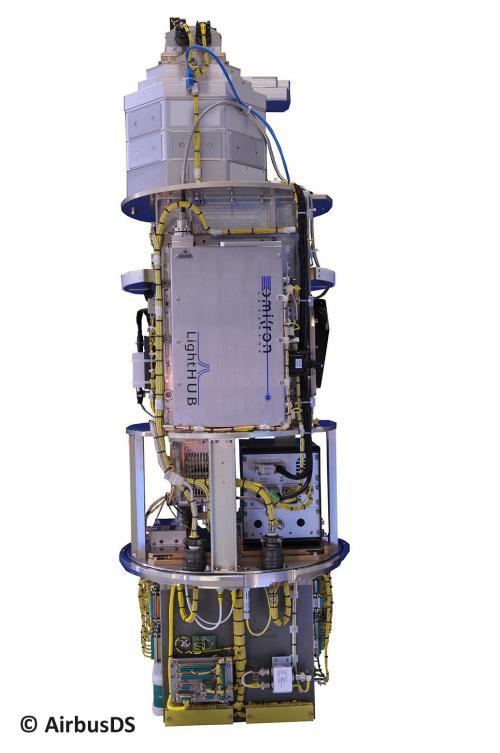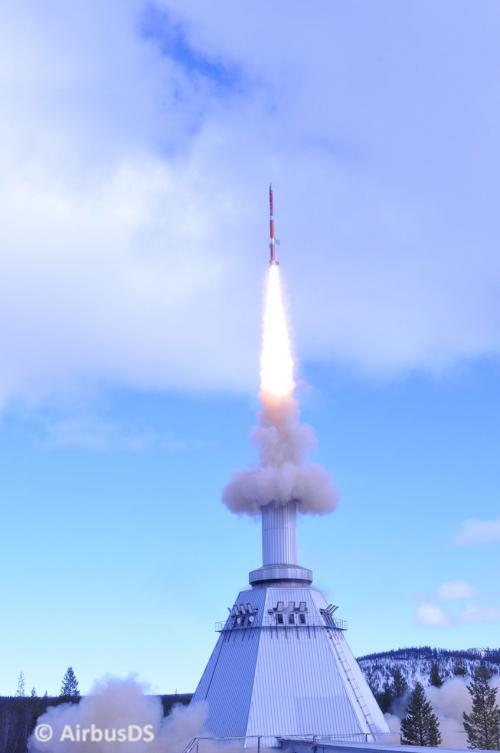German Lasers take off: Omicron LightHUB on a journey in space
Laser and LED specialist Omicron once more confirms the exceptional stability of its LightHUB® Laser Combiner on board of a skyrocket
In the course of the project: “Fluorescence Microscopy Analysis under Microgravity” (FLUMIAS) a TEXUS VSB-30 rocket launched on April 27, 2015 at 6:55 in Esrange, Sweden. On board: an Omicron LightHUB laser combiner equipped with four LuxX diode lasers in different wavelengths, serving as a light source for a spinning disk fluorescence microscope, with the purpose to obtain high resolution pictures and videos of the cytoskeleton dynamics of human cells in microgravity during a 6 minute parabolic flight. The research rocket ascended to approximately 250 kilometers hight. During start, reentry into atmosphere and the hard impact of the payload stage on earth when landing, powers of up to 25G occurred. Not only the outer shell of the LightHUB, but also the integrated LuxX diode lasers passed these rough circumstances with flying colours. Full functionality of the LightHUB laser combiner could be proved immediately after dismounting.
“The Module with the LightHUB unit worked perfectly throughout the whole flight. It even passed re-entry without damage“ says Dr.-Ing. Hergen Oltmann from Airbus DS.
The Omicron LightHUB series combines up to two, four or six diode and DPSS lasers into a co-linear beam or couples them efficiently and stable into single-mode or multimode fibres. The system is constructed on a modular basis and may be converted or upgraded by the customer himself within minutes. Lasers of more than 30 different wavelengths from 355nm up to 2080nm and powers of up to 500mW per wavelength can be used within the LightHUB.
The LightHUB systems are commonly being used in biotechnology, microscopy and industrial applications.
back


